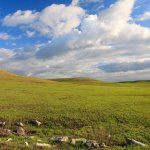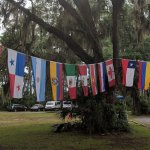By Sandra Giner – Tropical Zoology and Ecology Institute, Central University of Venezuela
Salina Solar Los Olivitos is a WHSRN site located within an area managed for the production of industrial salt by the company Productora de Sal, C.A. (PRODUSAL). It is one of 13 WHSRN sites where salt production is a major activity. Through its Clean Harvest Program, which aims to produce salt in a sustainable way, the company takes care of the environment and the shorebirds using its salt ponds. This program promotes the adoption of best practices in processes and products related to waste management and conservation of natural resources in the area.
Salina Solar Los Olivitos is part of the estuarine system of La Ciénaga de Los Olivitos, located in the northeast of Zulia state, Venezuela. It is situated along a very arid coastline with major dune fields, coastal ridges and lagoon, mangroves, tidal channels, and salt flats. The WHSRN site is adjacent to the Ciénaga Los Olivitos Wildlife Refuge and Fish Reserve, which is also a Ramsar Site and an Important Bird Area (VE014). The site was designated as a WHSRN Site of International Importance just two years ago, in March 2018, due to the presence of large concentrations of shorebirds between September and May. Large flocks of Semipalmated Sandpiper (Calidris pusilla), Western Sandpiper (C. mauri), and Least Sandpiper (C. minutilla) use the site, exceeding 100,000 individuals.
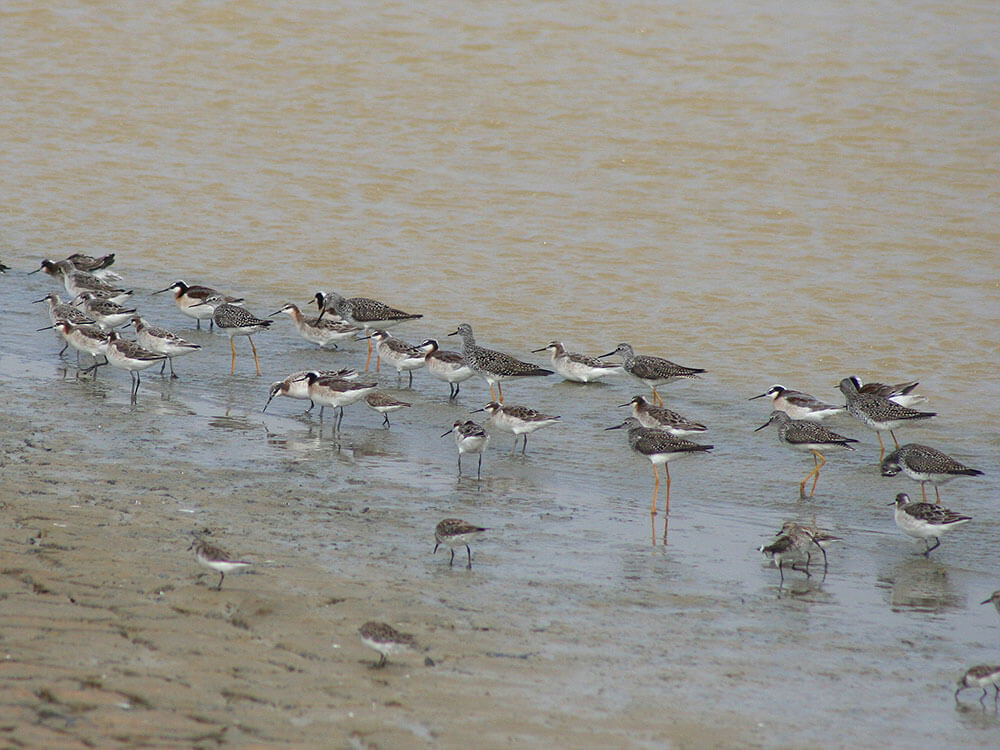
Greater Yellowlegs, Wilson’s Phalaropes and Western Sandpipers are some of the regular visitors. Photo: Lermith Torres
Lermith Torres, an educator, birdwatcher, environmentalist, and president of the local NGO MANGLE has been monitoring shorebirds at this site from before the WHSRN designation. Lermith highlights that “since 2010, PRODUSAL has played a valuable role in the conservation of shorebirds, for instance supporting the Neotropical Waterbird Census (during February and July each year). The company’s personnel is aware of the importance of the area for migratory and breeding shorebirds. After the designation of the site as Venezuela’s first WHSRN site of International Importance, the company has demonstrated a deep commitment to the protection of the 28 shorebirds species recorded within the area, and to its role conserving all the ecosystems associated with them”. PRODUSAL‘s staff also record locations where resident species breed, with a focus on Snowy Plover (Charadrius nivosus), as well as helping to reduce disturbance in the nesting areas.
Since the site’s designation, Lermith has recorded American Oystercatcher (Haematopus palliatus) for the first time –previously only known locally from the La Ciénaga de Los Olivitos– while other new records have included nesting of Black-necked Stilt (Himantopus mexicanus), Southern Lapwing (Vanellus chilensis), and Least Tern (Sternula antillarum).
Surveys conducted in 2018 following the designation of the site, resulted in 51,426 shorebirds being recorded, with the highest abundances in March, and between September and December. In 2019, censuses were carried out between February and September, recording 40,464 individuals, with the highest abundances in February, March, and May. In both years, Semipalmated Sandpiper had the highest numbers with 33,099 in 2018 and 24,080 in 2019. Other species frequently observed are Western Sandpiper, Least Sandpiper, White-rumped Sandpiper (Calidris fuscicollis), Stilt Sandpiper (C. himantopus), Lesser Yellowlegs (Tringa flavipes), Greater Yellowlegs (T. melanoleuca), and Wilson’s Phalarope (Phalaropus tricolor). A high count of 502 Wilson`s Phalarope in February 2020 was a particularly noteworthy record for Venezuela. The abundance of shorebirds also attracts predators: three species of falcon are regular visitors – Peregrine (Falco peregrinus), Aplomado Falcon (F. femoralis), and Merlin (F. columbarius). Of these, the Peregrine is the most frequently recorded species, with up to 5 individuals present at any one time.
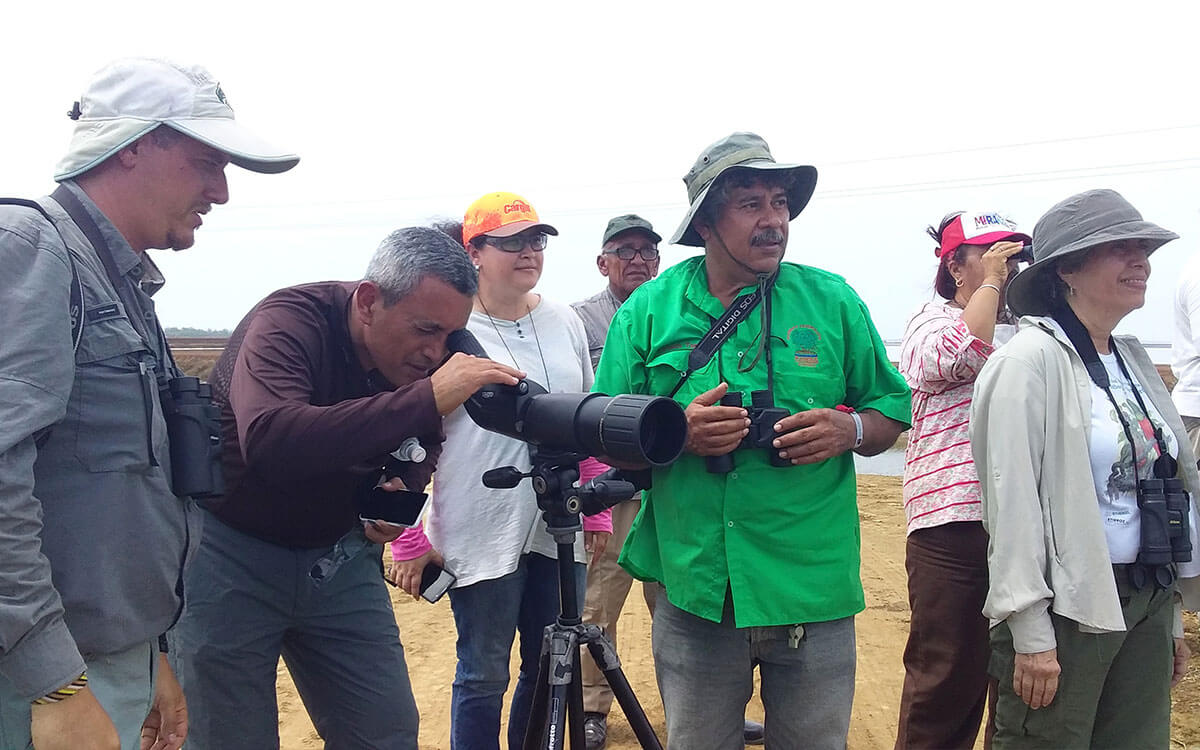
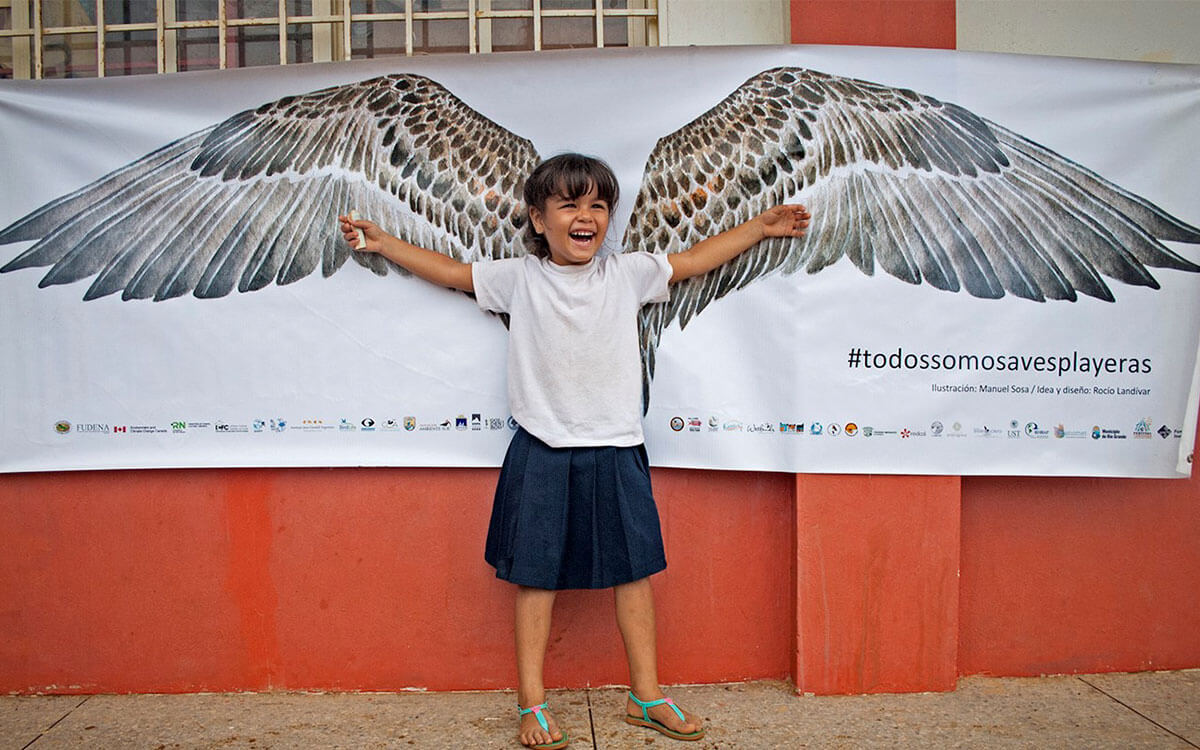
Left: Team from MANGLE, PRODUSAL, and Audubon Society of Venezuela counting shorebirds. Photo: L. Torres Right: Participant of Migratory Bird Festival. Photo: C. Jaimes
Other activities that have been undertaken to support the conservation of shorebirds and waterbirds in the area include:
– The workshop Training Birdwatching Guides in the municipality of Miranda, Zulia state, organized by Audubon Society of Venezuela in April and September 2019, with the support of UNDP and the collaboration of MANGLE and PRODUSAL
– The “Migratory Bird Festival” organized by MANGLE in May 2019 with the support of Environment for the Americas, William Phelps Ornithological Collection, and Fudena, aimed at students of the indigenous Wayuú group in the El Brisal community school, near the Salina Solar Los Olivitos.
– A workshop held in September 2019, to celebrate World Beach Day and within the framework of World Migratory Bird Day, to train youth from the town of Ancón de Iturre (adjacent to PRODUSAL) in birdwatching for conservation. The danger of plastic for birds was discussed while collecting solid waste from the beach. The workshop was coordinated in collaboration with MANGLE, the Ministerio del Poder Popular para Ecosocialismo (Ministry of People’s Power for Ecosocialism), the Environmental Directorate of the Mayor’s Office of the Municipality of Miranda, the staff of PRODUSAL, and the Environmental Nursery of Zulia state.
PRODUSAL is now developing a Management Plan for the WHSRN site, with the help of the biologist Juan Parra and two students from the Biology Program of the University of Zulia. The biologists will develop the shorebird conservation aspects of the Management Plan in addition to undertaking shorebird counts in the salt ponds, and providing training to the personnel in environmental issues.
Cover Photo: Flock of sandpipers. Photo: L. Torres





